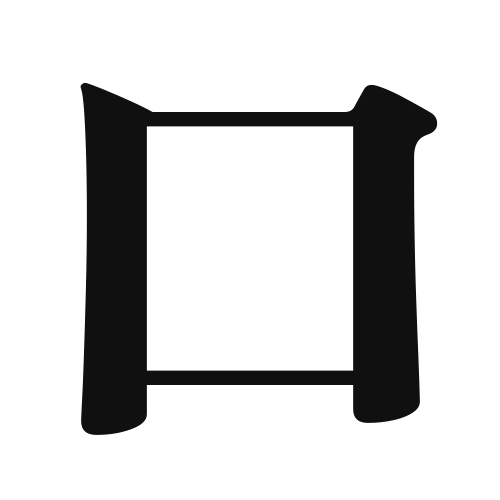1. Overview of Meaning
The kanji “口” (kuchi) means “mouth” in Japanese. It represents the opening of the mouth and is often associated with speaking, eating, and communication.
2. Formation and Radical
Formation of the Kanji: The kanji “口” is a pictogram, originally depicting a simple representation of a mouth. It belongs to the category of ideograms, as it conveys a specific concept through its shape.
Radical: The radical for “口” is also “口” (kuchi), which is used in various kanji related to speaking and eating.
3. Examples of Usage
Common Words and Phrases: Some frequently used words that include “口” are:
- 口 (kuchi) – mouth
- 口語 (kugo) – colloquial language
- 口座 (koza) – bank account
Example Sentences in Daily Conversation:
- 彼は大きな声で話す口を持っています。 (Kare wa ookina koe de hanasu kuchi o motteimasu.) – He has a loud mouth.
- お腹が空いたので、何かを口にしたいです。 (Onaka ga suita node, nanika o kuchi ni shitai desu.) – I’m hungry, so I want to put something in my mouth.
4. Synonyms and Antonyms
Similar Kanji: A similar kanji is “言” (gen), which means “word” or “speech.” While “口” refers to the physical mouth, “言” focuses on the act of speaking or the words themselves.
Antonyms: An antonym could be “耳” (mimi), which means “ear.” While “口” is associated with speaking, “耳” is related to listening.
5. Cultural and Historical Background
Connection to Japanese Culture: The concept of “口” is significant in Japanese culture, as it relates to communication and social interaction. The mouth is often seen as a gateway for expressing thoughts and emotions.
Proverbs and Idioms: One common idiom is “口は災いの元” (kuchi wa wazawai no moto), which translates to “the mouth is the source of disaster.” This saying warns that speaking carelessly can lead to trouble.
